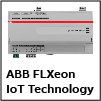Realcomm 2015
Feel Secure in Your Discomfort and Excitement. It Means
You’re Listening.
|
July 2015 |
Babel Buster Network Gateways: Big Features. Small Price. |
|
Realcomm 2015 Feel Secure in Your Discomfort and Excitement. It Means
You’re Listening. |
|
| Articles |
| Interviews |
| Releases |
| New Products |
| Reviews |
 |
| Editorial |
| Events |
| Sponsors |
| Site Search |
| Newsletters |

|
| Archives |
| Past Issues |
| Home |
| Editors |
| eDucation |

|
| Training |
| Links |
| Software |
| Subscribe |

|
Realcomm/IBcon
2015 happened last week, and the phrase that captured
this moment in commercial building operations was ‘uncomfortable
excitement.’ The pre-conference Cybersecurity Forum pounded home
themes of threat awareness and security tech. To quote speaker Marty
Edwards, U.S. Department of Homeland Security (DHS)
Edwards'
presentation on threats was followed by a panel on how the
industry is responding with participants Cisco, Intel, Siemens,
SchneiderNA, and Tridium. We heard about how they’ve hardened their
products. For example the new Tridium JACE 8000 won’t boot up if it
detects unexpected alterations in the code. Intel has opened a Security
Intelligence Center to guide customers in Federal Information
Processing Standard (FIPS) 140 compliance. If a customer reports
suspicious activities on its network, Cisco, Siemens and Intel all have
response teams at the ready.
The next morning in the General Session, attendees heard from Bran
Ferren, a Disney-trained futurist, who said that business survival
demands adventuring into the future now, by piloting projects that
leverage new mobile, cloud and analytics technology. The same set of
dueling imperatives—staying secure versus staying technologically
competitive—reemerged again and again during the pre-conference
Intelligent Buildings Boot Camp and Smart Building Integrator Summit,
as well as during the many sessions of the official two-day program.
Smart buildings consultancy, Intelligent Buildings, LLC, led the IB
Bootcamp which focused on top trends revolutionizing the
Design/Construction cycle for new buildings and retrofits. The
first three of these trends are being led by Master System Integrators
and include 1) a preference for open protocols, 2) converging silo-ed
building systems onto one network, and 3) connection and control via
cloud architectures.
In this interview by Eric Stromquist of Tom Shircliff
and Rob Murchison
of Intelligent Buildings, LLC, they explain how clients can put a
security governance structure in place before acting on these trends.
Over in the SB Integrator Summit, Gregg Berkeley covered how Intel was
building security into the firmware of the microprocessor-enabled
devices sitting at the edge of the Internet of Things. This is critical
to those facilities ready to set up the two-way communications needed
to not only remotely monitor and do fault detection and diagnostics,
but to control remotely when a fault is discovered. Christine Bowles of
Intel Smart Buildings and Richard Newbury of KMC Controls explain how
Intel is working with controls-industry partners to deliver such
open, secure and scalable platforms.
A common point made
by both Chip Pierpont, the Government Security
Administration’s (GSA) Director of Facilities Operations &
Technologies, and Daniel Cocosa, Google’s Regional Facility Manager,
was that, authority to sign off on cloud deployments has moved into IT
departments. Recent high-profile data breaches have led to even
stricter policies when it comes to allowing Internet
connectivity. Cloud-hosted platforms that Facilities could
approve just six to twelve months ago would have to pass the scrutiny
of IT and the Chief Security Officer today. Pierpont offered this
advice to other Facilities Managers:
The imperative to
improve building system security was not the only
factor contributing to the feeling of exciting discomfort at the
conference. There was also consensus that digital natives have
different expectations of their workspaces compared to previous
generations of occupants, in terms of utility, sustainability and
flexibility. Ferren’s assessment was that in the future personal
office space will be defined by the 8 square inches that it takes to
operate a smart phone in your hand. The rest of the facility should be
designed to accommodate productivity in this space. Google’s
Cocosa added that property owners and facility managers need to always
be on the look out for technologies that have the greatest potential to
improve people’s quality of life. They should be driving the change and
piloting projects, making it easy for occupants to experience the
technology and adjust behaviors.
Cocosa was also a participant in the Day 2 session on Selecting an
Intelligent Building Operating Platform, along with Rob Murchison of
Intelligent Buildings, Joseph Feuling of CBRE/ESI and McKenney’s Leroy
Walden representing Inside IQ Building Automation Alliance. This
session highlighted one more reason to feel both excited and wary—this
with regard to the perennial Realcomm topic of openness when it comes
to your building data. Here’s a quote from Murchison that captures
where the industry is on that topic:
There was acknowledgment of Project
Haystack and its
efforts in open
source naming and tagging. But, there are also other meta-tagging
systems like sMAP, developed at the UC Berkeley and productized by
Building Robotics as Trendr and KGS Clockworks has a built-in
naming/tagging system. Location data is an aspect of naming, so
it’s also worth noting that Apple and Google remain in heated
competition for dominance in indoor geolocation mapping. The
consensus
during this Realcomm panel discussion was that meta-tagging is a
critical issue and that we’re only in the 2nd inning when it comes to
this contest. By any measure,
Realcomm-IBcon #17 was a success. Jim Young and Howard
Berger suggested that we stay tuned. We may not need to wait an entire
year before their next Realcomm-IBcon conference event.
[Home Page] [The Automator] [About] [Subscribe ] [Contact Us]